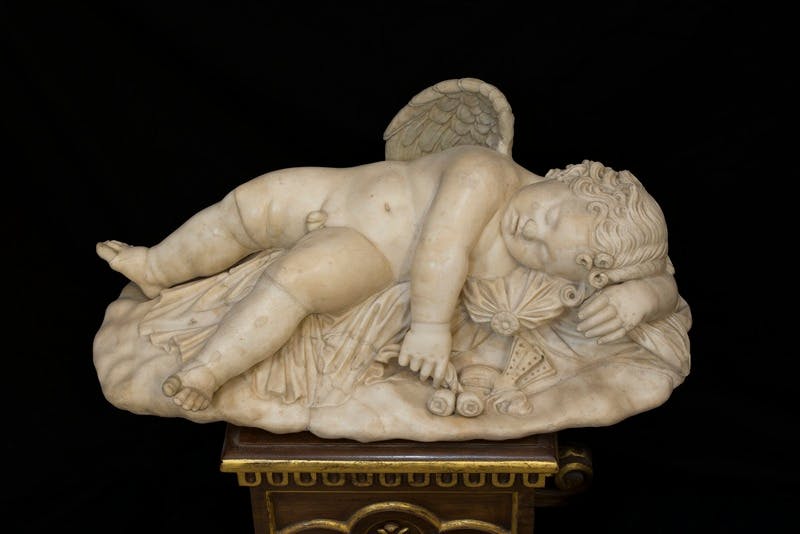Sleeping Eros
Roman Art
Home to the Gallery’s undisputed masterpieces, the Tribune contains figures of sleeping cherubs, gently lying on lion skins. Sculptures of this kind were generally used in Roman art to decorate children’s graves. There are various examples of this type of statue, all elegant and with a strong emotional impact. The sleepy gazes of the cherubs do not show signs of sadness, in spite of the funerary destination of the sculptures. Immersed in their world of dreams, with light hair that frames their chubby faces with half-open mouth, these children were surrounded by symbols of good wishes and rebirth. The idea of death as a gateway to new life can also be seen in this work, from the poppies that the child holds in his left hand. In ancient times, poppy seeds were used to make powerful sleeping draughts and the use of the flower here is to give death the quality of temporary sleep. This idea of passing on is also confirmed by the presence of a butterfly, whose use as a symbol of the soul, with which it shares the same name in Greek, psyché, is widely documented by numerous attestations in funerary contexts.The strongly naturalist symbols used here all convey an intense message of hope.
3D model in collaboration with Indiana University.
Visit http://www.digitalsculpture.org/florence/
A. Muscillo in 1564-2014. Michelangelo. Incontrare un artista universale, Catalogo della mostra (Roma, Musei Capitolini 27 maggio – 14 settembre 2014), Roma 2014, pp. 245-246, cat. II.7
The Tribune
Bernardo Buontalenti ( Florence 1531 - 1608)
